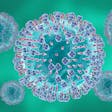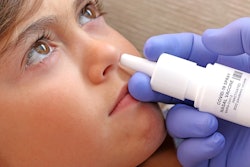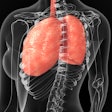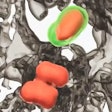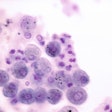
Data from two phase 3 clinical trials demonstrate nerandomilast helps significantly reduce the decline in forced vital capacity (FVC) by absolute change from baseline at week 52, compared to placebo.
The concurrent studies evaluated nerandomilast — an investigational, oral, preferential inhibitor of phosphodiesterase 4B (PDE4B) — in patients with idiopathic pulmonary fibrosis (IPF) and progressive pulmonary fibrosis (PPF) with and without background antifibrotic therapy. Full reports were published in the New England Journal of Medicine and researchers presented results in a late-breaking abstract at the American Thoracic Society International Conference in May 2025.
Both studies, FIBRONEER-IPF and FIBRONEER-ILD, met the primary endpoint at nerandomilast doses of 9 mg and 18 mg versus placebo.
“After several challenges in the scientific community to bring forward new clinical data, IPF and PPF continue to take a devastating toll on patients,” said first author Toby Maher, MD, PhD, professor of clinical medicine at Keck School of Medicine at USC Los Angeles, in a press release. “Having two phase 3 trials meet the primary endpoint is a major breakthrough for the scientific community, highlighting nerandomilast’s potential to have a meaningful impact on patients’ unmet needs, being studied as monotherapy or in combination with current treatments.”
According to manufacturer Boehringer Ingelheim, the drug’s safety and tolerability profile was consistent across both trials, with similar rates of permanent treatment discontinuation to placebo. In FIBRONEER-IPF, adverse events led to discontinuation of the trial regimen in 14.0% of the nerandomilast 18 mg group, 11.7% of the nerandomilast 9 mg group and 10.7% of the placebo group. In FIBRONEER-ILD, adverse events led to discontinuation of the trial regimen in 10.0% of the nerandomilast 18 mg group, 8.1% of the nerandomilast 9 mg group and 10.2% of the placebo group.
Across the trials, there were no imbalances among the three groups with respect to adverse events of special interest, such as vasculitis, depression, suicidality or drug induced liver injury.
FIBRONEER-IPF was a phase 3, double-blind, randomized, placebo-controlled trial evaluating the efficacy and safety of nerandomilast in patients with IPF over at least 52 weeks. A total of 1,177 patients across 36 countries were randomly assigned to receive nerandomilast 9 mg twice-daily, nerandomilast 18 mg twice-daily or placebo twice-daily. The composite key secondary endpoint of time to first acute IPF exacerbation, first hospitalization for respiratory cause or death was not met.
In all three groups, diarrhea was the most common adverse event that led to discontinuation. Adverse events causing treatment stoppage were higher in patients also taking background antifibrotic therapy. Fatal adverse events occurred in 5% of patients receiving placebo, 4% of patients receiving nerandomilast 9 mg and 2% of patients receiving nerandomilast 18 mg.
FIBRONEER-ILD was a phase 3, double-blind, randomized, placebo-controlled trial evaluating the efficacy and safety of nerandomilast in patients with PPF over at least 52 weeks. A total of 1,176 patients across 44 countries were randomly assigned to the same three dosage groups. As in the other trial, nerandomilast was not statistically significant for the composite key secondary endpoint. However, there were numerically fewer deaths in the nerandomilast treatment groups (6.1% in 18 mg group, 8.4% in 9 mg group) versus the placebo group (12.8%).
The most common adverse events that led to discontinuation of treatment in the nerandomilast 9 mg, nerandomilast 18 mg and placebo groups were diarrhea (1.3%, 2.6% and 0.5%, respectively) and worsening of pulmonary fibrosis (1.5%, 1.0% and 3.1%, respectively). Background nintedanib therapy did not play a significant role in adverse events and subsequent treatment discontinuation. Fatal adverse events occurred in 5.1% of patients receiving placebo, 3.6% of patients receiving nerandomilast 9 mg and 2.0% of patients receiving nerandomilast 18 mg.
“Idiopathic pulmonary fibrosis and progressive pulmonary fibrosis are devastating conditions, with one in two people dying within five years of IPF diagnosis. Despite this stark reality, ongoing research may provide new possibilities for patients, as there remains a need for additional therapies,” said Shashank Deshpande, head of human pharma and member of the board of managing directors at Boehringer Ingelheim. “The latest efficacy, safety and tolerability data on nerandomilast patients points to its potential in addressing the needs of those impacted by IPF and PPF.”
The U.S. Food and Drug Administration (FDA) granted Breakthrough Therapy Designation to nerandomilast for the treatment of IPF in February 2022 and for the treatment of PPF in April 2025. New Drug Applications have been filed for both diseases, with an anticipated action date of Q4 2025 for nerandomilast in IPF. Similar regulatory submissions are also under review in the European Union and China.
